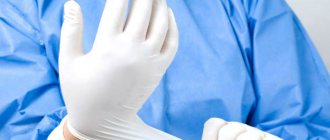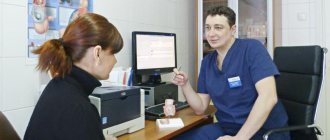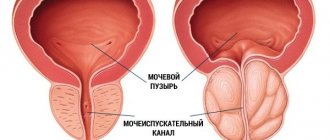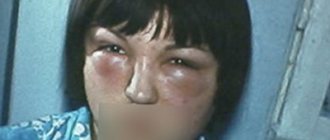What are hemorrhoids
Hemorrhoids (from the Greek haima - “blood”, roe - “flow”) are one of the most common diseases in proctology, which is based on the pathological condition of the cavernous plexuses of the rectum, accompanied by stagnation of blood in them. Hemorrhoids are manifested by periodic bleeding from the nodes, their prolapse from the anal canal and frequent inflammation. Men and women are equally susceptible to hemorrhoids
Classification of hemorrhoids
Internal hemorrhoids. With internal hemorrhoids, there are varicose hemorrhoidal veins, which are located deep in the anal canal, so such hemorrhoids are not visible during a normal examination. In order to see them, you have to resort to special research methods: anoscopy, rectoscopy. Also, such nodes can be identified during digital rectal examination. Such a sign of the disease as prolapse of hemorrhoids can cause bleeding when they are injured during the act of defecation. With significant weakness of the ligamentous apparatus of the rectum, such nodes fall out during defecation or significant straining. In addition, the internal nodes, when they fall out and spasm of the anal sphincter, can be infringed. Most often, the first signs of internal hemorrhoids are bleeding.
External hemorrhoids. In this type of hemorrhoid, the hemorrhoids are marked externally and should not be confused with prolapsed internal hemorrhoids. Most often, external nodes manifest as thrombosis. As a rule, bleeding from external nodes does not occur, since they are not injured during defecation. Such hemorrhoids hurt and cause discomfort during bowel movements. But constant stagnation of blood in them can lead to the formation of blood clots in them. Externally, the external hemorrhoidal node can be of different sizes, from 3 mm or more, which depends on its blood supply. An external hemorrhoid is usually covered by skin, while a prolapsed internal hemorrhoid is usually covered by the mucous membrane of the anal canal.
Combined hemorrhoids. As the name implies, with combined hemorrhoids, the patient has a combination of external and internal hemorrhoids.
The occurrence of hemorrhoids
Normally, all people have external and internal hemorrhoidal venous plexuses under the mucous membrane of the anal canal, which are similar in structure to the cavernous tissue of the genital organs. They play a significant role in retaining intestinal contents, ensuring complete closure of the anal canal when they are filled with blood. As a result of the influence of a number of factors, most adults experience an increase in hemorrhoidal nodes, and hemorrhoids begin to develop.
Factors influencing the development of hemorrhoids: constipation, straining; pregnancy, childbirth; hereditary factors; sedentary lifestyle; prolonged standing or sitting; excessive physical activity; practicing some sports (horse riding, cycling, weightlifting); lifting weights; overweight; hot, spicy food; drinking alcohol; prolonged exposure to heat (sauna, hot bath); prolonged diarrhea (diarrhea).
Symptoms
At stages 1-2, internal hemorrhoids rarely cause any trouble and in most situations proceed hidden. In some cases, patients are disturbed by a feeling of discomfort in the anus, which intensifies after a long stay in a sitting position, as well as a feeling of incomplete bowel movement after defecation in the actual absence of constipation.
As the disease progresses to stages 3-4, more striking symptoms appear:
- itching, burning or constant discomfort in the anus;
- painful bowel movements, with pain persisting for 10-30 minutes after defecation;
- bleeding from the anus (less often - mucous discharge);
- prolapse of hemorrhoids from the anus to the outside.
- anoscopy - to assess the size of hemorrhoids;
- rectoscopy - to detect concomitant diseases;
- colonoscopy - to examine the general condition of the rectum.
Diagnostics
Internal hemorrhoids are easily detected during a digital examination of the anus by a proctologist or surgeon. In some cases, special instrumental research may be required:
Haemorrhoids
5173 28 July
IMPORTANT!
The information in this section cannot be used for self-diagnosis and self-treatment.
In case of pain or other exacerbation of the disease, diagnostic tests should be prescribed only by the attending physician. To make a diagnosis and properly prescribe treatment, you should contact your doctor. Hemorrhoids: causes, classification, symptoms, diagnosis and treatment methods.
In world statistics of proctological diseases, hemorrhoids rank first as the most common pathology (up to 41% of cases): more than 75% of people aged 45-65 years are diagnosed with varicose veins of the rectum.
Reasons for the development of hemorrhoids
- The development of varicose veins of the rectum due to compression from the outside (tumors of the pelvic organs or intestines) with impaired outflow through the intestinal veins.
- Impaired outflow of venous blood from the rectum due to pathologies not related to the pelvic and intestinal organs (liver disease).
- Dystrophy of the anatomical structures responsible for the elasticity of the venous wall.
Provoking factors for the development of hemorrhoids include:
- Pregnancy and childbirth.
- Connective tissue dysplasia.
- Hereditary predisposition.
- Physical inactivity, predominantly sedentary lifestyle.
- Impaired intestinal motility with a predominance of constipation.
- Frequent or constant use of laxatives, regular mechanical irritation of the rectal mucosa.
- Activities associated with excessive muscle tension (weightlifting, physically demanding work).
- The predominance of spicy and spicy foods in the diet.
- Diseases of the pelvic organs, leading to compression of the pelvic veins.
- Pathology of the valve apparatus of the intestinal veins (in particular, the rectal plexus).
- Liver pathology (for example, cirrhosis) with the development of portal hypertension.
Classification of the disease By localization:
- interior;
- outer;
- combined.
With the flow:
- Spicy
- without inflammation of hemorrhoids;
- with inflammation of hemorrhoids;
- with the involvement of surrounding tissues in the inflammatory process.
- Chronic
- with bleeding without prolapse of hemorrhoids;
- with bleeding, but the prolapsed nodes are reduced spontaneously;
- reduction of nodes is possible only manually (with or without bleeding);
- the nodes are irreducible (with or without bleeding) or fall out immediately after reduction.
According to etiology, hemorrhoids are divided into:
- congenital (hereditary);
- acquired;
- symptomatic.
Symptoms of hemorrhoids
Acute hemorrhoids, due to the vivid clinical picture, immediately forces you to seek help. In this case, timely treatment prevents the process from becoming chronic.
In acute hemorrhoids, discomfort, itching and pain in the anus are noted, especially aggravated by defecation. Blood appears in the stool, and it covers the feces without mixing with them.
Chronic hemorrhoids are characterized by the same symptoms, but there are periods when the symptoms disappear, appearing again under the influence of provoking factors. With exacerbation of chronic hemorrhoids, its symptoms are similar to those of acute disease.
During the period of remission of chronic hemorrhoids, there are no complaints of specific discomfort.
The clinical picture of hemorrhoids depends on the stage of the disease.
The first stage of hemorrhoids is characterized by minimal manifestations; discomfort during bowel movements and pain in the hemorrhoids are possible. When examined by a specialist, dilation of the capillaries of the rectal mucosa is recorded, which indicates venous stagnation, the appearance of nodes and local inflammation of the mucous membrane. Sometimes blood is released during bowel movements.
The second stage is characterized by prolapse of hemorrhoids during and after defecation with the possibility of their spontaneous reduction. In this case, bleeding and mucus discharge from the rectum occur more often, and itching and discomfort in the anal area are bothersome.
At the third stage, hemorrhoids fall out not only during defecation, but also during straining, coughing and other actions leading to increased intra-abdominal pressure (lifting heavy objects), and do not spontaneously reduce.
At the fourth stage, repositioning of the nodes is impossible either spontaneously or manually. This stage is the most dangerous in terms of the development of complications: prolonged heavy bleeding is possible, threatening the development of anemia (a decrease in the level of hemoglobin and the number of red blood cells that carry oxygen to all tissues, which, accordingly, will affect all organs), and thrombosis of hemorrhoids. Internal hemorrhoids in the early stages are asymptomatic; there may be a sensation of a foreign body in the rectum or a feeling of empty bowel. The discharge of blood and mucus at this stage is so scanty that it goes unnoticed. Hemorrhoids do not protrude into the lumen of the rectum.
As hemorrhoids enlarge, the intestinal lumen narrows, and therefore the process of fecal excretion is disrupted. Defecation is accompanied by pain and microtrauma of the mucous membrane, which leads to inflammation and aggravation of the symptoms of the disease. At a later stage, the entire symptom complex appears (bleeding, pain, discharge of blood and mucus from the rectum, prolapse of nodes, discomfort in the anal area), the likelihood of complications increases - anemia, thrombosis or the addition of a secondary infection with the development of paraproctitis (inflammatory - often purulent - tissue disease surrounding the rectum).
External hemorrhoids are characterized by the appearance of pain in the anus after exposure to provoking factors (coughing, prolonged sitting, heavy lifting, straining, defecation). With this form of the disease, bleeding occurs much less frequently than with internal hemorrhoids. Blood is visible not on feces, but on linen, toilet paper and personal hygiene products. Upon examination and palpation of the affected area, painful nodes are detected.
If persistent pain occurs in the perineum, not related to the act of defecation, or an increase in the size of the hemorrhoids, the development of thrombosis of the hemorrhoids is most likely, which, if left untreated, can lead to complications and the need for surgical intervention.
Diagnosis of hemorrhoids Diagnosis of hemorrhoids begins with an examination (external and internal) or by a proctologist. With internal hemorrhoids, the nodes are dark cherry in color, have a soft elastic consistency, are painful on palpation, and protrude into the lumen of the rectum. With external hemorrhoids, nodes of a similar type are visible around the anus. Instrumental diagnostic methods are used - anoscopy, sigmoidoscopy, colonoscopy.
Causes
The main reason for the development of internal forms of hemorrhoids is a violation of the inflow and outflow of blood in the cavernous (cavernous) bodies. In a healthy person, these corpuscles fill with blood when the intestines are filled with feces, which causes them to increase and makes it easier to control the urge to defecate. After successful bowel movement, blood flows out and the cavernous bodies shrink.
If the regulation of outflow is disrupted and the cavernous bodies are constantly in an increased size, then over time this leads to varicose veins and thinning of the venous vessels. The main causes of blood outflow disorders traditionally include the following factors:
Diagnosis and choice of treatment tactics
Diagnosis of hemorrhoids is carried out by a proctologist using a digital examination. Symptoms such as bleeding, pain, and the sensation of a foreign body in the rectum occur with cancer, as well as with other pathologies of the lower intestine.
Therefore, the general list of examinations may include sigmoidoscopy or colonoscopy, as well as laboratory tests.
At the final stage of diagnosis, treatment tactics are chosen. Acute hemorrhoids are treated conservatively, and in the chronic form of the disease they resort to surgery, giving preference to minimally invasive treatment methods.
The exception is cases when surgery is temporarily contraindicated. For women, this is pregnancy, the postpartum period, as well as situations when it is necessary to stabilize the general condition of the patient. This situation can arise during acute infections or during exacerbation of severe chronic diseases.
Treatment options
Internal hemorrhoids can be treated conservatively, but only if the disease was detected in the early, almost always asymptomatic, stages. In this case, the patient is prescribed regulation of motor activity, prevention of constipation (diet table No. 3), taking phlebotonic drugs and a course of therapy with rectal antihemorrhoidal suppositories.
If the favorable moment has been missed, only surgical methods will help to cope with the disease:
- 1. Sclerotherapy
: a sclerosing drug is injected into the hemorrhoidal node, causing “gluing” of the walls of the venous vessel and its gradual resorption. Effective for the treatment of stage 1-2 hemorrhoids. At stages 3-4 of the disease, the procedure helps reduce the size of the nodes.
2. Laser vaporization
: The hemorrhoid is removed using heat from a laser beam. Effective for the treatment of stage 1-3 hemorrhoids. At stage 4, vaporization is practically useless.
3. Hemorrhoidectomy
: direct removal of hemorrhoids using a scalpel or electric knife. It is used at the 4th stage when hemorrhoids prolapse outward.
4. Removal using the Surgitron device
: The hemorrhoid is removed with a narrow beam of high-frequency radio waves. Like hemorrhoidectomy, it is indicated for prolapsed nodes.
Latex ligation for the treatment of internal hemorrhoids, as a rule, is not used due to the low effectiveness of this method in combating advanced forms of the disease - that is, when the internal node falls out.
Timely diagnosis
To avoid hemorrhoids and possible complications, it is necessary to identify the disease at its earliest stages. Internal hemorrhoids can be detected by digital examination of the rectum, feeling for compaction of the hemorrhoidal veins. But such an examination is effective only when the nodes are located low. If the cones are located high up, then only modern equipment can help in diagnosing the disease. Anoscopy and sigmoidoscopy are the most common techniques. In the first case, a special tube with an optical device is used, which allows one to examine the rectal mucosa over a ten-centimeter length. If the hemorrhoids are located even higher, then you cannot do without the help of a sigmoidoscope. The rectum at a distance of 25 cm will be “in full view” to the doctor. If the patient states that during defecation he himself observed the prolapse of nodes, then a diagnosis can be made based on this reliable fact. True, unfortunately, for the patient the stage of the disease in this case is later, and therefore less treatable.
Clinical prognosis
The overall clinical prognosis is always favorable. Modern proctological methods make it possible to successfully treat internal hemorrhoids even at the most advanced stages.
The disease can pose a threat to life only if the hemorrhoids become necrotized with the addition of blood poisoning, but this is only possible in the case of a long, persistent and conscious refusal of the patient to receive medical care.
Surgeon-coloproctologist, surgeon of the highest category. Rakhmatullin Andrey Albertovich
Stages of development of chronic pathology
With chronic hemorrhoids, the pain syndrome is much weaker. Often the only signs of chronic pathology are itching around the anus blood appearing on the surface of the stool from time to time .
The stages of development of internal hemorrhoids differ using the most objective symptom - the degree of stretching of the dilated veins: I. The hemorrhoid is constantly located in the intestinal cavity II. The knot falls out when straining and resets itself back III. The patient has to adjust the knot with his hands IV. One or more hemorrhoids are constantly on the outside and cannot be reduced
At any stage, thrombosis of the dilated veins of the rectum , in which case severe pain syndrome characteristic of an acute attack occurs.
With a long course of the disease, the risk of complications increases ( anemia, neurasthenia, anal fissure, etc. ).
What is prohibited if cavernous nodes have fallen out
If a hemorrhoidal node has fallen out, the patient is prohibited from performing the following manipulations:
- Make sudden movements (to reduce the load on the rectal sphincter, you need to lie on your back and limit walking as much as possible).
- Using toilet paper (after visiting the toilet, hygiene procedures are carried out exclusively with water and soap).
- Wear clothes that are tight in the perineal area (squeezing and injury to the node occurs).
- Sitting and lying on soft surfaces (the mattress or seat should be fairly firm).
- Staying on the toilet for a long time (if it is difficult for the patient to empty his bowels on his own, you can give a cleansing enema).
The difference between hemorrhoids and rectal prolapse
Most patients diagnosed with cavernous sinuses are interested in the question of how to distinguish hemorrhoids from rectal prolapse.
A distinctive feature of rectal prolapse is the exit of the distal intestine to the outside
With rectal prolapse, there is a complete exit of the lower part of the intestine beyond the boundaries of the anus. The cause of prolapse is strong mobility of the rectum and weakness of the intestinal muscular system. It begins to stretch and eventually falls out. The mucous membrane of the prolapsed section undergoes destructive changes, it becomes swollen, red or bluish, and significantly increases in volume. In case of timely treatment of reduction of the rectal area, blood circulation can be restored. Without the necessary treatment measures, the mucous membrane becomes necrotic.
The similarity of the signs of rectal prolapse with the symptoms of hemorrhoids:
- long-term retention of feces;
- discharge of blood from the rectal canal;
- pain during bowel movements.
You can recognize rectal prolapse from hemorrhoids by the following criteria:
- Due to an increase in the intensity of physical activity.
- While coughing or sneezing.
- The prolapsed segment of the rectum can be reset with a finger.
- Exit of the segment can occur without straining.
At home, it is difficult to determine prolapse of the rectal segment from prolapse of nodes due to hemorrhoids, since to clarify the diagnosis you need to undergo special diagnostic tests, so you need to visit a proctologist. This is due to the fact that the treatment tactics for both diseases are radically different. In case of improper therapy, the course of the pathological process can be complicated.
Methods to combat external hemorrhoids
The main methods of treating this disease are as follows:
- Drug therapy.
- Folk remedies.
- Surgical intervention.
The first thing a patient with worsening hemorrhoids wants is to get rid of pain. To do this, you need to relieve inflammation and swelling in the node. Treatment is carried out with drugs that have:
- Anti-inflammatory effect, also aimed at relieving itching and swelling.
- Analgesic effect (cooling ointments).
- Blood thinning components that prevent the formation of blood clots in the nodes.
The first and second points are ointments and suppositories, the range of which in pharmacies is quite wide. Even pregnant women have the opportunity to choose the most safe product for the child. To select a thinning drug, you must consult a doctor to agree on the dosage and method of treatment.
Folk remedies are resorted to when drug therapy does not give the expected result or at the time of remission of the disease. Natural therapy includes sitz baths with herbs, steam, and ointments based on natural ingredients. Such treatment methods need to be used for a long time, they do not give a quick effect, but in the long term they can completely cure external hemorrhoids.
Treatment of hemorrhoids, consisting of a combination of medications and traditional medicine, gives the best results. The variety of natural therapies allows you to choose a suitable and effective remedy. But the use of traditional methods of combating the disease is also best agreed with a doctor. Surgical intervention is indicated for the patient in the following cases:
- If drug and natural treatments are ineffective.
- In the presence of painful bleeding hemorrhoids that bring maximum discomfort to the patient.
- In case of a complication - thrombosis of a hemorrhoid or rectal prolapse.
The last 2 options cannot be cured with conservative therapy. The operation should be performed at the stage of remission of the disease in the absence of other contraindications in the patient.
Balanced diet
Diets, colon cleanses and enemas are the main provocateurs of anal problems. But a diet balanced in carbohydrates, proteins and fiber, and adherence to a drinking regime will improve regular bowel movements and relieve constipation.
Consume fermented milk products, which improves intestinal microflora. Eat fruits, vegetables, cereals and bran bread - all these foods improve intestinal motility.
Avoid alcohol and spicy foods. Reduce your consumption of flour, especially baked goods.
Treatment during pregnancy and after childbirth
Treatment of hemorrhoids in pregnant women and in the early postpartum period does not involve surgical intervention. The fact is that the reasons for the dilation of the veins of the rectum during this period are physiological in nature: • changes in hormonal levels; • increased intra-abdominal pressure; • increase in circulating blood volume; • straining during childbirth.
After childbirth, hormonal levels gradually normalize, which leads to the disappearance of the tendency to constipation. The volume of circulating blood decreases, intra-abdominal pressure decreases, the body's defenses are restored and all conditions for recovery are created.
Therefore, in most cases, a painful node that occurs during pregnancy or after childbirth disappears on its own under the influence of standard methods of conservative treatment.
Attention! When conservatively treating hemorrhoids in pregnant women, as well as in women during lactation, care should be taken. Some active ingredients of topically applied drugs still enter the bloodstream and can harm the child. Therefore, treatment must be done under the supervision of a physician.
Is it possible to cure chronic hemorrhoids with folk remedies?
Unfortunately, chronic hemorrhoids cannot be cured using conservative methods. “Folk” methods give a short-term effect. Similar results will be obtained with “home” drug treatment.
The unpleasant symptoms of the disease may disappear for a while, but the disease will develop unnoticed by you. In the future, the following complications may develop: • anal fissure; • anemia; • nervous exhaustion; • infectious processes (proctitis, paraproctitis, etc.).
It should also be noted that under the mask of hemorrhoids a deadly disease such as rectal cancer . Therefore, if alarming symptoms appear, you should urgently consult a doctor to find out an accurate diagnosis and begin adequate treatment.
Don’t waste time on self-medication, come to an appointment with a proctologist!









